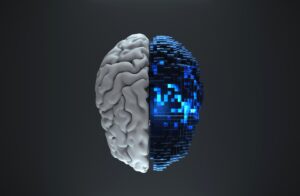Decoding Artificial Intelligence: A Quick Guide
Decoding Artificial Intelligence: A Quick Guide

Artificial intelligence (AI) has become an integral part of our daily lives, from voice assistants like Siri to personalized recommendations on streaming platforms. But how does AI actually work? It may seem like a complex and mysterious concept but fear not – in this blog post, we will demystify the inner workings of AI in a step-by-step guide. Whether you’re a tech enthusiast or simply curious about the technology that powers our modern world, this post is for you. So buckle up as we dive into the fascinating world of AI and uncover its secrets one step at a time!
Introduction
A. Definition of AI and its growing importance in various industries:
Artificial Intelligence (AI) represents a revolutionary paradigm in computing, where machines are endowed with the ability to mimic human intelligence. At its core, AI enables computers to engage in activities that typically necessitate human intelligence, such as problem-solving, learning, and decision-making. The definition encapsulates a broad spectrum, ranging from basic rule-based systems to advanced machine-learning algorithms. The blog aims to provide a comprehensive understanding of AI, emphasizing its escalating significance across diverse industries. This includes healthcare, finance, manufacturing, and beyond, where AI applications are reshaping processes, optimizing efficiency, and introducing unprecedented capabilities.
B. Brief explanation of the purpose of the blog post:
The overarching purpose of this blog post is to serve as a navigational guide through the multifaceted landscape of Artificial Intelligence. Recognizing the complexity and vastness of the subject, the post aims to demystify AI for readers at varying levels of familiarity. Whether the audience comprises novices seeking an introductory comprehension or individuals eager to deepen their existing knowledge, the blog intends to be an accessible and informative resource. The structured exploration covers fundamental AI concepts, delves into the intricacies of its components, illuminates the pivotal role of data, demystifies the operational mechanisms, explores real-world applications, and confronts ethical considerations. By doing so, the post endeavors to bridge the gap between the theoretical underpinnings of AI and its practical implications in the contemporary world.
What is Artificial Intelligence?
A. Defining AI and its core concepts:
Artificial Intelligence is an intricate field encompassing the simulation of human intelligence in machines, enabling them to perform cognitive tasks. This section elucidates the essence of AI, emphasizing key concepts integral to its understanding. Problem-solving, a hallmark of human intelligence, is replicated in AI systems, allowing them to navigate complex scenarios. Learning, both supervised and unsupervised, underpins AI’s ability to adapt and improve over time. Reasoning, the ability to make logical deductions, and perception, the interpretation of sensory inputs, round out the core concepts, forming the bedrock of AI understanding.
B. Differentiating between narrow and general AI:
The dichotomy between narrow and general AI is a pivotal distinction that shapes the landscape of artificial intelligence. Narrow AI, also known as Weak AI, is tailored for specific tasks and operates within predefined parameters. In contrast, General AI, or Strong AI, aspires to possess broad cognitive abilities akin to human intelligence. Understanding this dichotomy is crucial for appreciating the current state of AI applications and contemplating the potential future trajectories of AI development. It prompts reflection on the practical limitations of AI systems today and opens the door to envisioning a future where machines exhibit a more comprehensive understanding and adaptation to diverse tasks.
C. Examples of AI applications in everyday life:
To anchor the theoretical concepts of AI in tangible experiences, this section unfolds with concrete examples of how AI permeates our daily lives. Virtual assistants like Siri and Alexa showcase AI’s prowess in natural language understanding and response. Recommendation algorithms on platforms like Netflix and Amazon epitomize AI’s ability to discern user preferences. Fraud detection in banking, facial recognition in smartphones, and autonomous vehicles on our roads exemplify the diverse applications of AI that have become integral facets of modern existence. These examples serve to demystify AI by illustrating its practical implications in the contexts we encounter daily.
The Components of Artificial Intelligence
A. Machine Learning (ML):
Machine Learning (ML) is a subset of AI that empowers systems to learn patterns and make decisions without explicit programming. In this section, the focus is on the algorithms driving ML and their role in training AI models. ML algorithms operate iteratively, learning from data and improving their performance over time. This iterative learning process is fundamental to the adaptability and problem-solving capabilities of AI systems. The section also distinguishes between various ML techniques, such as supervised learning where models are trained on labeled data, unsupervised learning for pattern discovery in unlabeled data, and reinforcement learning which involves learning through trial and error.
B. Natural Language Processing (NLP):
Natural Language Processing (NLP) is a field within AI that deals with the interaction between computers and human language. This section explores how machines understand and respond to human language, going beyond mere syntax to comprehend semantics and context. Subfields within NLP, such as sentiment analysis and named entity recognition, showcase the versatility of language-processing capabilities. Readers gain insight into the challenges of teaching machines to understand the nuances of human communication, a crucial aspect of making AI more human-friendly and applicable in various domains.
C. Computer Vision:
Computer Vision allows machines to interpret and understand visual information from the world. This section delves into the complexities of how machines process visual data. It covers the basics of image classification, where AI identifies objects within images, object detection which involves locating and classifying multiple objects in an image, and facial recognition, which has applications in security and personal devices. Understanding the intricacies of Computer Vision provides readers with a glimpse into how machines can “see” and interpret the visual world, a capability essential for various AI applications, from autonomous vehicles to medical image analysis.
The Role of Data in AI Systems
A. Data collection process for training an AI model:
Data is the lifeblood of AI, and this section elucidates the crucial process of collecting data to train AI models. It discusses the diverse sources of data, ranging from structured databases to unstructured text and images. The quality and quantity of data play pivotal roles in the effectiveness of AI models, making the data collection process a critical precursor to successful AI implementation.
B. Clean data vs biased data: potential challenges:
Data quality is paramount in AI, and this part delves into the challenges posed by clean data versus biased data. Clean data ensures accurate and reliable models, while biased data can lead to skewed predictions and reinforce existing prejudices. Understanding these challenges is essential for practitioners and policymakers striving to harness AI responsibly and ethically.
C. Importance of large datasets for accurate predictions:
Large datasets are often synonymous with improved AI performance. This section delves into the importance of having extensive and diverse datasets for training AI models. Larger datasets contribute to better generalization, enabling AI systems to make accurate predictions across a wide range of scenarios.
How Does Artificial Intelligence Work?
A. Inputting data into an algorithmic model:
This section initiates the exploration of the AI operational process by elucidating the initial phase—inputting data into algorithmic models. It delves into the significance of data preprocessing, cleaning, and feature selection in preparing datasets for AI models. This step ensures that the data fed into algorithms is relevant, accurate, and conducive to effective model training.
B. Training phase: iterative process to optimize performance:
The training phase is a cornerstone in the AI workflow, characterized by an iterative process where models learn from data to optimize performance. This section expounds on the concepts of epochs, loss functions, and optimization algorithms. Readers gain an understanding of how AI models refine themselves through repeated exposure to data, adapting and improving their predictive capabilities.
C. Testing phase: evaluating accuracy before deployment:
Following the training phase, the testing phase is paramount to ensuring the accuracy and reliability of AI models before deployment. This section details the techniques involved in model evaluation, including cross-validation and the use of metrics to assess performance. It emphasizes the importance of thorough testing to mitigate the risk of errors and inaccuracies in real-world applications.
Real-World Applications & Impact
A. AI applications across industries such as healthcare, finance, and transportation:
This section offers a panoramic view of AI’s impact on various industries. It provides concrete examples of AI applications in healthcare, where diagnostic tools are revolutionizing patient care, in finance where fraud detection algorithms enhance security, and in transportation, with the advent of autonomous vehicles. Readers gain insights into the transformative potential of AI across diverse sectors.
B. Potential benefits and risks associated with widespread adoption:
Delving into the broader implications of widespread AI adoption, this section discusses both the potential benefits and risks. It explores how AI can increase efficiency, and drive innovation, but also introduces concerns such as job displacement and ethical considerations. The balanced exploration encourages readers to critically assess the multifaceted impacts of AI on society.
Ethical Considerations & Responsible Usage
A. Addressing concerns about job displacement:
This section acknowledges and delves into the valid concerns regarding job displacement due to increased automation facilitated by AI. It explores the potential impact on employment and discusses strategies and policies that can be employed to mitigate these concerns. Addressing the ethical implications of job displacement is crucial in fostering a responsible approach to AI implementation.
B. Ensuring fairness, transparency, and accountability:
Highlighting the ethical considerations inherent in AI development, this part emphasizes the principles of fairness, transparency, and accountability. It explores the challenges of avoiding biases in AI algorithms and stresses the importance of transparency in how AI systems make decisions. Accountability measures, including explainability of AI decisions, are discussed to promote responsible AI usage.
C. Government regulations on ethical use:
The role of government regulations in overseeing the ethical use of AI is explored in this section. It investigates existing and potential regulatory frameworks aimed at ensuring responsible AI practices. Government oversight is crucial in establishing guidelines that promote ethical AI development, deployment, and usage in various industries.
Conclusion
Summarizing key points discussed throughout the blog post:
This section serves as a comprehensive recapitulation, summarizing the key concepts covered in the blog post. It reinforces the fundamental aspects of AI, its components, operational mechanisms, real-world applications, and ethical considerations. Readers are provided with a consolidated understanding of the diverse facets explored in the blog.
Encouraging readers to embrace the opportunities presented by understanding AI:
In the final segment, the conclusion encourages readers to embrace the opportunities presented by understanding AI. It emphasizes the positive potential of AI technologies, the transformative impact they can have, and encourages readers to actively engage with the evolving landscape of AI. The conclusion serves as a motivational call to action, urging readers to explore, learn, and contribute to the responsible and ethical development and utilization of AI.



Good info